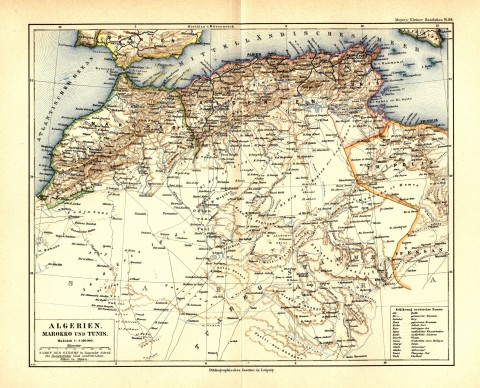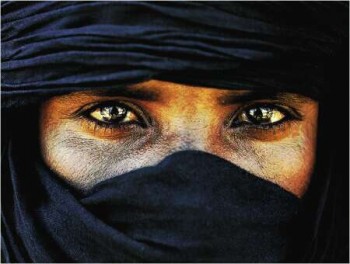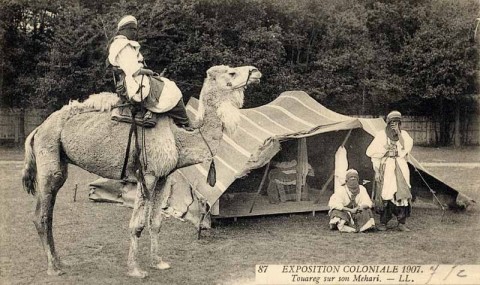Tuareg
The Tuareg
The Tuareg (also spelled Twareg or Touareg; endonym Imuhagh) are a Berber people with a traditionally nomadicpastoralist lifestyle. They are the principal inhabitants of the Saharan interior of North Africa.
The Tuareg language, a branch of the Berber language, has an estimated 1.2 million speakers. About half this number is accounted for by speakers of the Eastern dialect (Tamajaq, Tawallammat). Most Tuareg live in the Saharan parts of Niger, Mali, and Algeria. Being nomadic, they move constantly across national borders, and small groups of Tuareg are also found in southeastern Algeria, southwestern Libya and northern Burkina Faso, and a small community in northern Nigeria.
The name Tuareg is possibly derived from Targa, the Berber name of Libya’s Fezzan province. The name Tuareg thus in origin designated the inhabitants of Fezzan from the perspective of the Berbers living closer to the Mediterranean coast, and was adopted from them into English, French and German during the colonial period. The Berber noun targa means “drainage channel” and by extension “arable land, garden”. It designated the Wadi al-Haya area between Sabhaand Ubari and is rendered in Arabic as bilad al-khayr ”good land”.
The name of the Tuareg for themselves is Imuhagh or Imushagh (cognate to northern Berber Imazighen). The term for a Tuareg man is Amajagh (var. Amashegh, Amahagh), the term for a woman Tamajaq (var. Tamasheq, Tamahaq, Timajaghen). The spelling variants given reflect the variety of the Tuareg dialects, but they all reflect the same linguistic root, expressing the notion of “freemen”, strictly only referring to the Tuareg “nobility”, to the exclusion of the artisan client castes and slaves. Another self-designation of more recent origin is linguistic, Kel Tamasheq or Kel Tamajaq ”Speakers of Tamasheq”.
Also encountered in ethnographic literature of the early 20th century is the name Kel Tagelmust ”People of the Veil” and “the Blue People” (for the indigocolour of their veils and other clothing, which sometimes stains the skin underneath). …
http://en.wikipedia.org/wiki/Tuareg_people
Foto:
http://img.lib.msu.edu/branches/map/AfJPEGs/84_g1019m4_1892_l.jpg
http://2.bp.blogspot.com/-iOFl6jmZkr8/T_wToOoRYhI/AAAAAAAAABk/GHsSZgGdLsA/s1600/tuareg.jpg
http://en.wikipedia.org/wiki/File:Tuareg_1907.jpg



